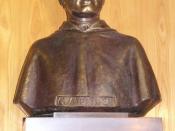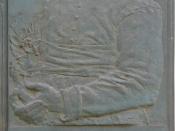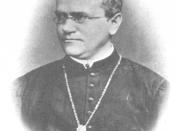Gregor Johann Mendel was born on July 22, 1822 to peasant parents in a small agrarian town in Czechoslovakia. During his childhood he worked as a gardener, and as a young man attended the Olmutz Philosophical Institute. In 1843 he entered a Augustinian monastery in Brno, Czechoslovakia.
He was later sent to the University of Vienna to study. By both his professors at University and his colleagues at the monastery, Mendel was inspired to study variance in plants. He commenced his study in his monastery's experimental garden. Between 1856 and 1863 Mendel cultivated and tested some 28,000 pea plants. His experiments brought forth two generalizations which later became known as Mendel's Laws of Heredity. Ironically, when Mendel's paper was published on 1866, it had little impact. It wasn't until the early 20th century that the enormity of his ideas was realized.
During Mendel's lifetime, Brno was the capital of the province of Moravia and part of the powerful Austrian-Hungarian Empire. The abbey was a renowned center of learning when Mendel arrived there as a novice in 1843. Today the abbey is a historic site. The abbey's library is especially impressive and compromises some 30,000 books dating to Mendel's time. Though, it is presently closed to the public, there are rare tours of it. Other items on display include tools for teaching botany, various scientific instruments, and a striking photograph of Mendel and his fellow friars.
Mendel's hypothesis essentially has four parts. The first states that "Alternative versions of genes account for variations in inherited characters." In a nutshell, this is the concept of alleles. Alleles are different versions of genes that impart the same characteristic. Each human has a gene that controls height, but there are variations among these genes in accordance with the specific height the gene "codes"...


